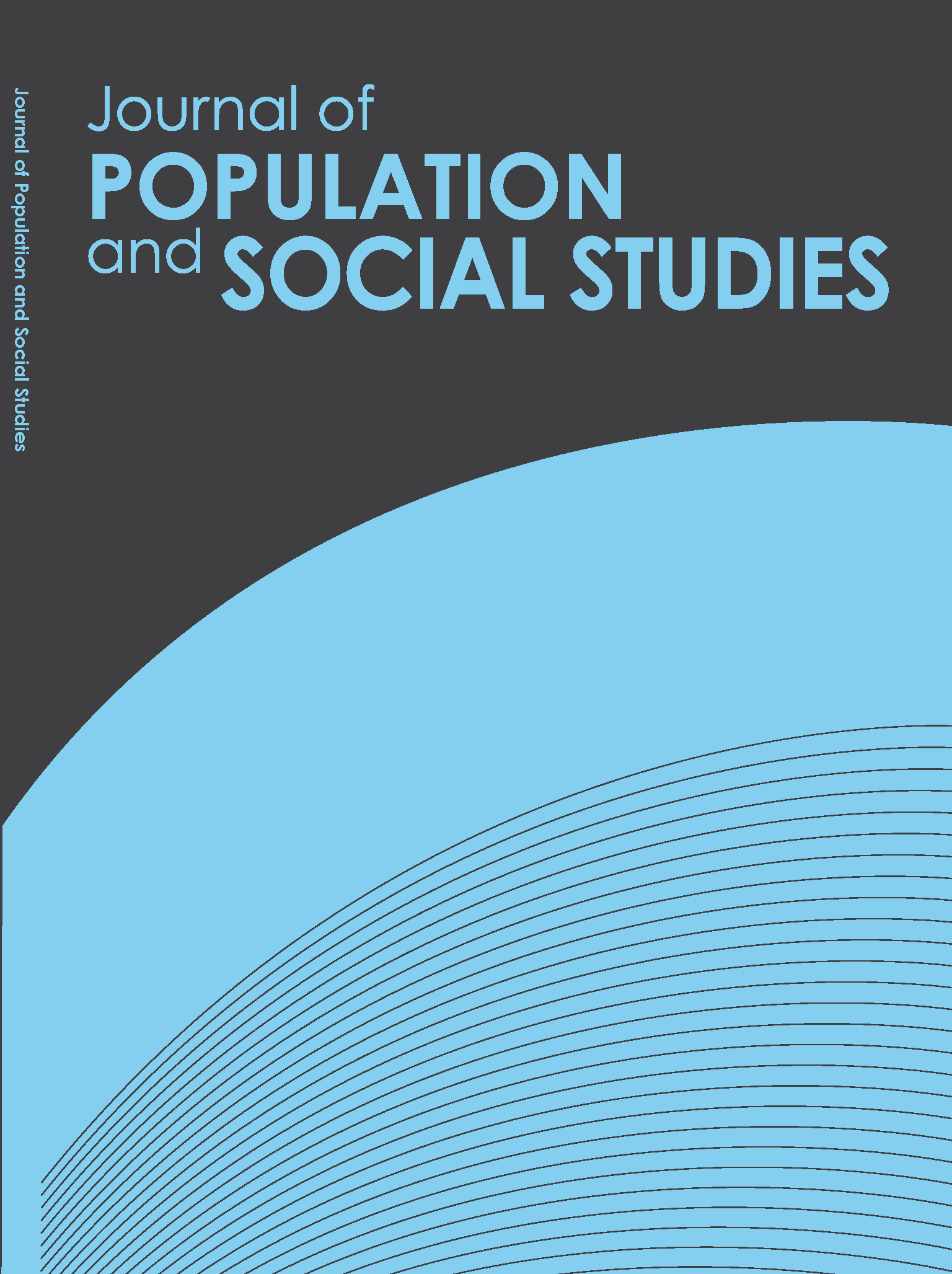The Reach of Media to Smokers and Smokeless Tobacco Users in India: Evidence from the Global Adult Tobacco Survey (GATS)
Main Article Content
Abstract
This study focuses on the impact of mass media in creating awareness and enhancing efficacy of tobacco control interventions by disseminating knowledge to the public about the harmful effects of tobacco. It examines variations in awareness of tobacco’s health hazards and anti-tobacco campaigns among 69,296 adults aged 15 and above based on gender and tobacco use (smoked or smokeless) and the role of the media in cessation attempts by tobacco users using data from the Global Adult Tobacco Survey (GATS). The GATS is a household survey which was conducted in India during 2009-10. The study found that a higher proportion of adults was exposed to anti-smoking information across different media compared with anti-smokeless tobacco information. Tobacco users are also less likely to be aware of the health hazards of tobacco compared with non-users. Noticing anti-tobacco messages and knowing the health hazards of smokeless tobacco use are significantly associated with cessation attempts among tobacco users in India. Males are more likely to notice anti-smoking and anti-smokeless tobacco information through any media compared with females.
Article Details
References
• Adekunle, S. (2011). Effects of health education on cigarette smoking habits of young adults in tertiary institutions in a northern Nigerian state. Health Science Journal.
• Arora, M., Gupta, V.K., Nazar, G.P., Stigler, M.H., Perry, C.L., & Reddy, K. S. (2012). Impact of tobacco advertisements on tobacco use among urban adolescents in India: results from a longitudinal study. Tobacco control, 21(3), 318-324.
• Centers for Disease Control and Prevention. (2003). Designing and implementing an effective tobacco counter-marketing campaign. Atlanta, Georgia: US Department of Health and Human Services, Centers for Disease Control and Prevention, National Center for Chronic Disease Prevention and Health Promotion, Office on Smoking and Health.
• Cotter, T., Perez, D.A., Dessaix, A.L., & Bishop, J.F. (2008). Smokers respond to anti-tobacco mass media campaigns in NSW by calling the Quitline. New South Wales public health bulletin, 19(4), 68-71.
• Dongre, A.R., Deshmukh, P.R., Murali, N., & Garg, B.S. (2008). Tobacco consumption among adolescents in rural Wardha: where and how tobacco control should focus its attention? Indian journal of Cancer, 45(3), 100.
• Durkin, S., Bayly, M., Cotter, T., Mullin, S., & Wakefield, M. (2013). Potential effectiveness of anti-smoking advertisement types in ten low and middle income countries: Do demographics, smoking characteristics and cultural differences matter? Social Science & Medicine, 98, 204-213.
• Durkin, S., Brennan, E., & Wakefield, M. (2012). Mass media campaigns to promote smoking cessation among adults: an integrative review. Tobacco control, 21(2), 127-138.
• Global Adult Tobacco Survey (2009-10) International Institute for Population Sciences (IIPS), Mumbai, India. The Ministry of Health and Family Welfare (MOHFW), Government of India. Retrieved from http://mohfw.nic.in/WriteReadData/l892s/1455618937GATS%20India.pdf
• Goodman, J. (2005). Tobacco in history: The cultures of dependence. Routledge.
• Gravely, S., Fong, G.T., Driezen, P., Xu, S., Quah, A.C., Sansone, G., & Pednekar, M.S. (2016). An examination of the effectiveness of health warning labels on smokeless tobacco products in four states in India: findings from the TCP India cohort survey. BMC public health, 16(1), 1246.
• International Agency for Research on Cancer. IARC Handbooks of Cancer Prevention, Tobacco Control, Volume 13, Evaluating the Effectiveness of Smoke-free Policies; [represents the Views and Opinions of an IARC Working Group on Evaluating the Effectiveness of Smoke-Free Policies which Met in Lyon, France, 31 March-5 April 2008]. IARC; 2009.
• Jha, P. (2009). Avoidable global cancer deaths and total deaths from smoking. Nature Reviews Cancer, 9(9), 655-664.
• Kaur, J., & Jain, D.C. (2011). Tobacco control policies in India: implementation and challenges. Indian journal of public health, 55(3), 220.
• Mullin, S. (2011). Global anti-smoking campaigns urgently needed. The Lancet, 378(9795), 970.
• Narain, R., Sardana, S., Gupta, S., & Sehgal, A. (2011). Age at initiation & prevalence of tobacco use among school children in Noida, India: A cross-sectional questionnaire based survey. The Indian journal of medical research, 133(3), 300.
• Oswal, K.C., Raute, L.J., Pednekar, M.S., & Gupta, P.C. (2011). Are current tobacco pictorial warnings in India effective? Asian Pac J Cancer Prev, 12(1), 121-124.
• Popova, L. (2014). Scaring the snus out of smokers: Testing effects of fear, threat, and efficacy on smokers’ acceptance of novel smokeless tobacco products. Health communication, 29(9), 924-936.
• Rachel, L.S., & Heather, L.W. (2011). Jonathan MS. India's progress in implementing the Framework Convention on Tobacco Control. Indian J MedRes, 133, 455-457.
• SPSS, I. (2011). IBM SPSS statistics base 20. Chicago, IL: SPSS Inc.
• The Union. (2015). Mass media campaigns: Factsheet 5 fact sheet. February 2015. Retrieved from www.tobaccofreeunion.org
• Turk, T., Chaturvedi, P., Murukutla, N., Mallik, V., Sinha, P., & Mullin, S. (2016). Raw and real: an innovative communication approach to smokeless tobacco control messaging in low and middle-income countries. Tobacco control, tobaccocontrol-2016.
• US Department of Health and Human Services. (2014). The health consequences of smoking—50 years of progress: a report of the Surgeon General. Atlanta, GA: US Department of Health and Human Services, Centers for Disease Control and Prevention, National Center for Chronic Disease Prevention and Health Promotion, Office on Smoking and Health, 17.
• Viswanath, K., Ackerson, L.K., Sorensen, G., & Gupta, P.C. (2010). Movies and TV influence tobacco use in India: findings from a national survey. PLoS One, 5(6), e11365.
• World Health Organization. (2011). WHO report on the global tobacco epidemic, 2011: warning about the dangers of tobacco. Geneva: World Health Organization.
• World Health Organization. (2013). WHO report on the global tobacco epidemic, 2013: enforcing bans on tobacco advertising, promotion and sponsorship. World Health Organization.
• World Health Organization. (2010). Guidelines for implementation of Article 12 of the WHO Framework Convention on Tobacco Control (education, communication, training and public awareness). Geneva: World Health Organization.


